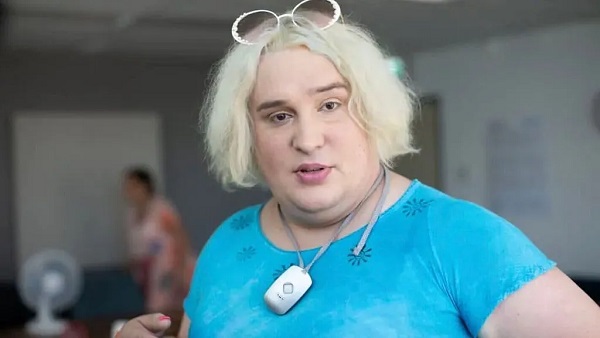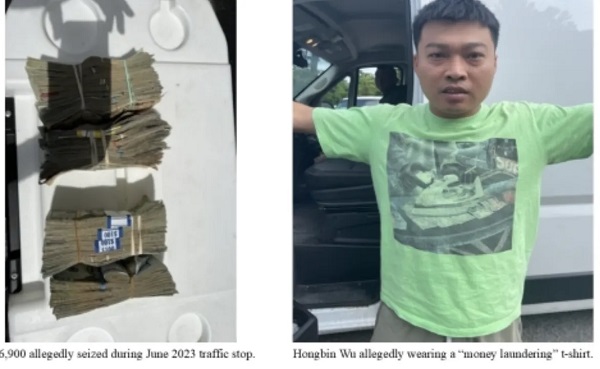conflict
How the Biden-Harris admin pushed Russia into war with Ukraine
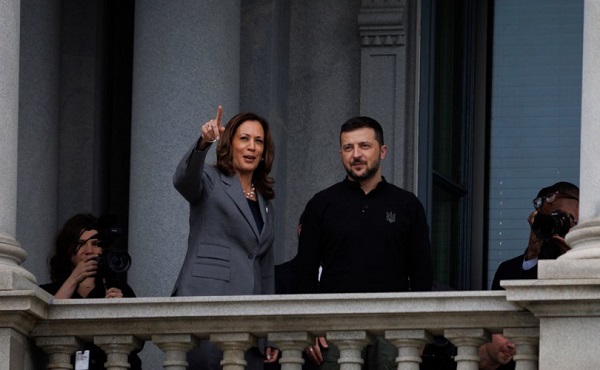
From LifeSiteNews
By Bob Marshall
I was … bothered by the references to Russia as a country dying to attack Western Europe.… Our differences in the Cold War were with the Soviet Communist regime. And now we are turning our backs on the very people who mounted the greatest bloodless revolution in history to remove that Soviet regime.
In September, Vice President Kamala Harris stated several points at the White House as to how she would handle the Ukraine-Russia war: “I will work to ensure Ukraine prevails in this war.… Putin started this war, and … Putin could set his sights on Poland, the Baltic states, and other NATO Allies.… [S]ome in my country … demand that Ukraine accept neutrality, and would require Ukraine to forego security relationships with other nations. These proposals are the same of those of Putin.”
But these are the same Biden-Harris tactics and policies that provoked war.
Harris blames Russian President Vladimir Putin for the war. But the proximate source of the Russia-Ukraine conflict goes back beyond Putin to the breakup of the Soviet Empire and even earlier.
End of the Cold War
In late October 1989, the famed Berlin Wall as a dividing line between Socialist German Democratic Republic (GDR) and West Germany, called a “wall of mistrust” by then former Soviet leader Mikhail Gorbachev, was crumbling.
Obviously, Gorbachev, with almost 400,000 troops in East Germany could have stopped the reunification. But Western officials gave Russian leaders assurances there was nothing to worry about. U.S. Secretary of State James Baker told Gorbachev that NATO expansion would proceed, “not one inch eastward.” The next day, West German chancellor Helmut Kohl assured Gorbachev, “NATO should not expand the sphere of its activity.”
The Los Angeles Times noted, “Less than a week later, Soviet President Mikhail Gorbachev agreed to begin reunification talks. No formal deal was struck, but from all the evidence, the quid pro quo was clear: Gorbachev acceded to Germany’s western alignment and the U.S. would limit NATO’s expansion.… NATO’S widening umbrella doesn’t justify Putin’s … incursions in Ukraine or Georgia. Still, the evidence suggests that Russia’s protests have merit and that U.S. policy has contributed to current tensions in Europe.”
Documents at George Washington University testify to agreements made between Western leaders and Russian officials at this time – that western nations would not expand NATO to the East.
Boris Yeltsin was the first president of the Russian Federation from 1991 to 1999, coming to office immediately after Premier Gorbachev’s resignation with the dissolution of the Soviet Empire. In 1995, President Yeltsin met with President Clinton in St. Catherine’s Hall at the Kremlin.
Yeltsin said to Clinton, “I want to get a clear understanding of your idea of NATO expansion, because now I see nothing but humiliation for Russia if you proceed. How do you think it looks to us if one bloc continues to exist while the Warsaw Pact has been abolished? It’s a new form of encirclement if the one surviving Cold War bloc expands right up to the borders of Russia. Many Russians have a sense of fear. What do you want to achieve with this if Russia is your partner, they ask. I ask it too. Why do you want to do this?”
When Clinton spoke to Yeltsin in 1995, there were 15 NATO member countries. When Clinton left office, there were 18.
Russia’s opposition to NATO expansion
In 2016, President Clinton’s former Defense Secretary Bill Perry said, “In the last few years, most of the blame can be pointed at the actions that Putin has taken. But in the early years … the United States deserves much of the blame.… Our first action … in a bad direction was when NATO started to expand, bringing in eastern European nations, some of them bordering Russia.”
Former CIA Director Robert Gates, who also served as Secretary of Defense for President George W. Bush and President Barack Obama, opposed the policy of “pressing ahead with expansion of NATO eastward [in the 1990s], when Gorbachev and others were led to believe that wouldn’t happen.”
In June 1997, 50 former senators, retired military officers, diplomats, and foreign policy academics wrote to President Clinton about the problems and ill consequences of NATO expansion:
[T]he current U.S. led effort to expand NATO … is a policy error of historic proportions.… NATO expansion will decrease allied security and unsettle European stability …
In Russia, NATO expansion, which continues to be opposed across the entire political spectrum, will strengthen the nondemocratic opposition … [and] bring the Russians to question the entire post-Cold War settlement.
In 1998, New York Times columnist Thomas Friedman asked George Kennan, who devised the successful “containment” policy to prevent the Soviet Union from achieving its goal of world domination through open warfare, what he thought of the U.S. Senate ratifying NATO expansion even up to Russia’s border. Kennan replied:
[I]t is the beginning of a new Cold War.… There was no reason for this.… No one was threatening anybody else.… We have signed up to protect a whole series of countries, even though we have neither the resources nor the intention to do so.
I was … bothered by the references to Russia as a country dying to attack Western Europe.… Our differences in the Cold War were with the Soviet Communist regime. And now we are turning our backs on the very people who mounted the greatest bloodless revolution in history to remove that Soviet regime.
In 2007, Putin noted, “NATO has put its frontline forces on our borders … and what happened to the assurances our western partners made after the dissolution of the Warsaw Pact … NATO General Secretary Mr. Woerner in Brussels on May 17, 1990 … said … ‘The fact that we are ready not to place a NATO army outside of German territory gives the Soviet Union a firm security guarantee.’ Where are these guarantees?”
Fiona Hill points to 2007 when Putin “put the world, and certainly Europe, on notice that Moscow would not accept the further expansion of NATO.… In 2008 NATO gave an open door to Georgia and Ukraine.… Four months after NATO’s Bucharest Summit, there was the [Russian] invasion of Georgia. There wasn’t an invasion of Ukraine then because the Ukrainian government pulled back from seeking NATO membership.”
William Burns, now President Biden’s Central Intelligence director and former U.S. ambassador to Russia, wrote to U.S. Secretary of State Condoleezza Rice in 2008:
Ukrainian entry into NATO is the brightest of all redlines for the Russian elite (not just Putin). In more than two and a half years of conversations with key Russian players … I have yet to find anyone who views Ukraine in NATO as anything other than a direct challenge to Russian interests.
Putin told Burns in 2008: “No Russian leader could stand idly by in the face of steps toward NATO membership for Ukraine. That would be a hostile act toward Russia. We would do all in our power to prevent it.”
In 2015, the German Der Speigel magazine interviewed Zbigniew Brzezinski, former national security advisor to President Jimmy Carter, regarding the status of Ukraine in response to the abrupt change in the presidential leadership and Russia’s annexation of Crimea. Brzezinski suggested that “Ukraine should be free to choose its political identity.… But … Russia should be assured credibly that Ukraine will not become a member of NATO.”
More recently in 2022, the Wall Street Journal reported, “Pope Francis said that the ‘barking of NATO at the door of Russia’ might have led to the invasion of Ukraine.… The pope … deplored the brutality of the war.… Pope Francis … described Russia’s attitude to Ukraine as ‘an anger that I don’t know whether it was provoked but was perhaps facilitated’ by the presence in nearby countries of the North Atlantic Treaty Organization.… ‘In Ukraine, it was other states that created the conflict.’”
The caution of these experienced statesmen and world leaders is lost on President Joe Biden and Vice President Kamala Harris.
This article is reprinted with permission from the Family Research Council, publishers of The Washington Stand at washingtonstand.com.
conflict
Trump’s done waiting: 50-day ultimatum for Putin to end Ukraine war
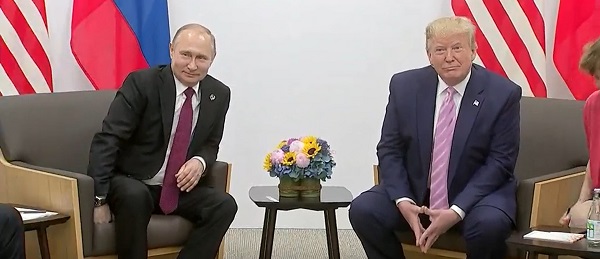
 MxM News
MxM News
Quick Hit:
President Trump is done waiting on Putin. On Monday, he gave Russia 50 days to end the war in Ukraine or face 100% tariffs and sweeping secondary sanctions. It marks a sharp shift — combining economic pressure with a new NATO deal to rush U.S. weapons, including Patriot missiles, to the front lines.
Key Details:
- Speaking from the White House on Monday, Trump warned of 100% tariffs and sweeping secondary sanctions unless Putin agrees to a peace deal by the 50-day deadline. “We’re very, very unhappy,” Trump said, adding the penalties will hit not only Russia but any nation still trading with it.
- Trump also confirmed a NATO agreement to purchase U.S. weapons for immediate transfer to Ukraine, saying, “This is billions of dollars worth of military equipment… quickly distributed to the battlefield.”
- The announcement came as Russian forces claimed new ground in eastern Ukraine and launched record missile strikes. Ukrainian President Zelensky met with Trump’s envoy in Kyiv and thanked the president for “important signals of support.”
🚨 TRUMP JUST GAVE PUTIN AN ULTIMATUM:
50 DAYS to make a PEACE DEAL in Ukraine — or face ***100%*** TARIFFS. pic.twitter.com/CbX1cYRxd5
— MxM News (@mxmnews) July 14, 2025
Diving Deeper:
President Donald Trump on Monday made clear he’s done waiting. After months of warnings and diplomatic overtures to Moscow, the commander-in-chief delivered a direct ultimatum: end the war in Ukraine within 50 days or prepare for economic devastation. The deadline marks a dramatic shift in Trump’s posture — from seeking a deal to forcing one.
“We’re going to be doing very severe tariffs if we don’t have a deal in 50 days — tariffs at about 100 percent,” Trump said during a press briefing with NATO Secretary General Mark Rutte at the White House. He described the measures as “secondary tariffs,” aimed at punishing countries still doing business with Russia, and vowed to collapse the economic lifelines keeping Moscow afloat.
The pivot comes as part of a broader strategy recalibration. Since returning to office in January, Trump had sought to fulfill his campaign promise of ending the war “in 24 hours” through direct diplomacy with Putin. That olive branch has now been snapped. Sources close to the administration say Trump’s frustration has grown sharply in recent weeks, especially after a wave of deadly Russian strikes left hundreds of Ukrainian civilians dead or wounded in June.
Rather than continuing to negotiate, Trump is now using American economic power and NATO’s military coordination to tighten the screws. On Monday, he also confirmed a new deal with NATO that will see the alliance buy advanced U.S. weaponry — including the powerful Patriot missile defense systems — and distribute them directly to Ukraine. “Massive numbers,” Rutte emphasized. Trump added that the weapons would be deployed “quickly” and said the U.S. would lead in helping Ukraine repel the increasing onslaught.
“This is billions of dollars worth of military equipment going to NATO… and that’s going to be quickly distributed to the battlefield,” Trump said.
The shift is not just military — it’s diplomatic. Trump’s special envoy, Gen. Keith Kellogg, landed in Kyiv Monday and met with Ukrainian President Volodymyr Zelensky. In a statement after the meeting, Zelensky described the talks as “productive” and said they covered joint weapons production and expanded cooperation with European partners. He also thanked Trump for the “important signals of support and the positive decisions for both our countries.”
Zelensky’s praise underscores how much the relationship has changed. Just months ago, Trump and his team had sharply criticized Zelensky during a February Oval Office meeting, sparking concerns in Kyiv that the White House was preparing to withdraw support. Now, those fears appear to be replaced with a renewed sense of partnership — one rooted in hard power.
The announcement follows Trump’s Sunday pledge to send additional Patriot systems to Ukraine, reversing earlier plans to pause certain military shipments. The White House made that shift in response to Russia’s relentless missile and drone assaults, which have overwhelmed Ukrainian defenses and pushed civilian casualties to a three-year high, according to the UN.
That urgency is not lost on Trump — who, after months of offering an exit ramp, now appears ready to close it off entirely.
conflict
US airstrike on Iran’s nuclear facilities. Was it obliteration?
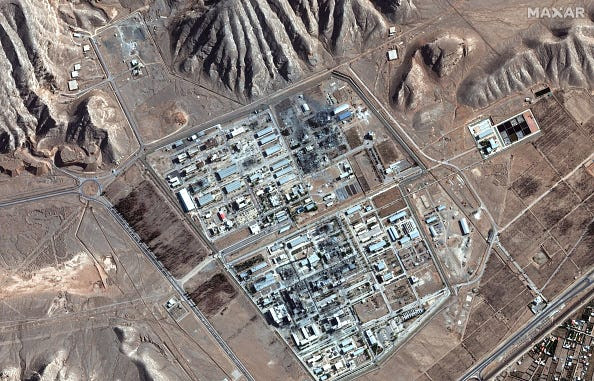
A satellite image of the Isfahan nuclear research center in Iran shows visible damage to structures and nearby tunnel entrances from recent US airstrikes. / Satellite image (c) 2025 Maxar Technologies.
 Seymour Hersh
Seymour Hersh
The US attack on Iran may not have wiped out its nuclear ambitions but it did set them back years
I started my career in journalism during the early 1960s as a reporter for the City News Bureau of Chicago, a now long-gone local news agency that was set up by the Chicago newspapers in the 1890s to cover the police and fire departments, City Hall, the courts, the morgue, and so on. It was a training ground, and the essential message for its aspiring reporters was: “If your mother says she loves you, check it out.”
It was a message I wish our cable networks would take to heart. CNN and MSNBC, basing their reporting on an alleged Defense Intelligence Agency analysis, have consistently reported that the Air Force raids in Iran on June 22 did not accomplish their primary goal: total destruction of Iran’s nuclear-weapons capacity. US newspapers also joined in, but it was the two nominally liberal cable channels, with their dislike—make that contempt—for President Donald Trump, that drove the early coverage.
There was no DIA analysis per se. All US units that engage in combat must file an “after-action report” to the DIA after a military engagement. In this case, the report would have come from the US Central Command, located at MacDill Air Force base in Tampa, Florida. CENTCOM is responsible for all US military operations in the Middle East, Egypt, Central Asia, Afghanistan, and Pakistan. One US official involved in the process told me that “the first thing out of the box is you have to tell your boss what happened.” It was that initial report of the bombing attack that was forwarded to DIA headquarters along the Potomac River in Washington and copied or summarized by someone not authorized to do so and sent to the various media outlets.
The view of many who were involved in the planning and execution of the mission is that the report was summarized and leaked “for political purposes”—to cast immediate doubt on the success of the mission. The early reports went so far as to suggest that Iran’s nuclear program has survived incapacitation by the attack. Seven US B-2 “Spirit” bombers, each carrying two deep-penetration “bunker-busters” weighing 30,000 pounds, had flown without challenge from their base in Missouri to the primary target: Iran’s Fordo nuclear facility, concealed deep inside a mountain twenty miles north of the city of Qom.
The planning for the attack began with the knowledge that the main target—the working area of the nuclear program—was buried at least 260 feet below the rocky surface at Fordo. The gas centrifuges spinning there were repeatedly enriching uranium, in what is known as a cascade, not to weapons-grade level—uranium-235 isotopes enriched to 90 percent—but to 60 percent. Further processing to create weapons grade uranium, if Iran chose to do so, could be done in a matter of weeks, or less. The Air Force planning group had also been informed before the bombing raid, most likely by the Israelis, who have a vast spy network in Iran, that more than 450 pounds of the enriched gas stored at Fordo had been shipped to safety at another vital Iranian nuclear site at Isfahan, 215 miles south of Tehran. Isfahan was the only known facility in Iran capable of converting the Fordo gas into a highly enriched metal—a critical early stage of building the bomb. Isfahan also was a separate target of the US attack on Fordo, and was pulverized by Tomahawk missiles fired by a U.S. submarine operating in the Gulf of Aden, off Yemen.
As a journalist who for decades has covered the nascent nuclear crisis in the Middle East, it seemed clear to me and to informed friends I have in Washington and Israel that if Fordo somehow survived its bunker-buster attack, as was initially suggested, and continued to enrich more uranium, Isfahan would not. No enrichment, no Iranian bomb.
I’ve been frustrated and angry at cable news coverage for years, and that includes Fox News, too, and decided to try and find the real story. If your mother says she loves you, check it out. And I checked out enough of it to share.
I was told that “the first question for the American planners was how big was the actual workspace at Fordo? Was it a structure? We had to find that out before we got rid of it.” Some of the planners estimated that the working space “was the size of two hockey rinks: 200 feet long and 85 feet wide.” It came to 34,000 square feet. The height of the underground working space was assumed to be ten-and-a-half feet—I was not told the genesis of that assumption—and the size of the target was determined to be 357,000 cubic feet.
The next step was to measure the power of the dozen or more bunker-busters that were planned to be “carefully spaced and dropped” by the US B-2 bombers, using the most advanced guidance systems. (During one high-level session in Washington, one of the Air Force planners was asked what would happen if the B-2’s guidance systems were corrupted by an outside signal. “We’d miss the target” was the answer.)
I was assured that even if the rough estimate of the working space at Fordo was far off, the bombers targeting Fordo each carried a 30,000-pound bomb with an explosive payload of as much as five thousand pounds, which was more than enough to pulverize the mythical hockey rinks, or even a much larger working space.
Some of the bombs were also outfitted with what is known as a hard target void sensing fuze, which enabled the bombs to penetrate multiple layers of a site like Fordo before detonating. This would maximize the destructive effect. Each bomb, dropped in sequence, would create a force of rubble that would cause increasing havoc in the working areas deep inside the mountain.
“The bombs made their own hole. We built a 30,000-pound steel bullet,” the official told me, referring with pride to the bunker-busters.
Most important, he said, was that there were no post-strike hints detected of radioactivity—more evidence that the 450 pounds of enriched uranium had been moved from Fordo to the reprocessing site at Isfahan prior to the US attack there, which was code-named “Midnight Hammer.” That operation included a third US strike at yet another nuclear facility at Natanz.
“The Air Force got everything on the hit list,” the official told me. “Even if Iran rebuilds some centrifuges, it will still need Isfahan. There is no conversion capability without it.”
Why not, I asked, tell the public about the success of the raid and the fact that Iran no longer has a potential nuclear weapon?
The answer: “There will be a top-secret report about all of this, but we don’t tell people how hard we work. We tell the public what we think it wants to hear.”
The US official, asked about the future of the Iranian nuclear program, quickly acknowledged that “there is a communication problem” when it comes to the fate of the program.
The intent of the strike planners, he said, “was to prevent the Iranians from building a nuclear weapon in the near term—a year or so—with the hope they would not try again. The clear understanding was that there was no expectation to ‘obliterate’ every aspect of their nuclear program. We don’t even know what that is.
“Obliteration means the glass—[eliminating] Iran’s nuclear program—is full. The planning and the results are the glass is half-full. For Trump critics, the results are the glass is half-empty—the centrifuges may have survived and four hundred pounds of 60 percent enriched uranium are missing. The bombs could not be assured to penetrate the centrifuge chamber . . . too deep, but they could cover them up [with rocks and other bomb debris] and in the process cause unknown damage to them.
“Whether the 60 percent [enriched uranium] was there or not is irrelevant because without centrifuges they cannot refine it to weapons grade. Add to this the research and refinement and conversion from gas to metal—required for a bomb—at Isfahan are also gone.
“Results? Glass is half-full . . . a couple of years of respite and uncertain future. So now Trump’s defense is Full Glass. Critics? Half-empty. Reality? Half-full. There you are.”
The immediate beneficiary of the use of US force in Iran will not be a more placid Middle East, but Israel, and Prime Minister Benjamin Netanyahu. The Israeli Air Force and army are still killing massive numbers of Palestinians in Gaza.
There remains no evidence that Iran was on the cusp of becoming a nuclear power. But as the world has known for decades, Israel maintains a significant nuclear arsenal that it officially claims does not exist.
This is a story not about the bigger picture, which is muddled, but about a successful US mission that was the subject of a lot of sloppy reporting because of a reviled president. It would have been a breakthrough had anyone in the mainstream press spoken or written about the double standard that benefits Israel and its nuclear umbrella, but in America that remains a taboo.
Subscribe to Seymour Hersh.
For the full experience, upgrade your subscription.
-
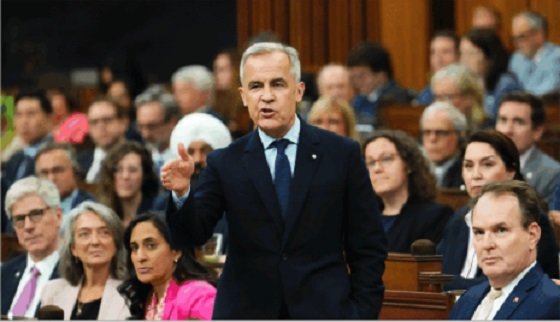
 Business1 day ago
Business1 day agoMark Carney’s Fiscal Fantasy Will Bankrupt Canada
-

 Alberta1 day ago
Alberta1 day agoTemporary Alberta grid limit unlikely to dampen data centre investment, analyst says
-

 Opinion1 day ago
Opinion1 day agoCharity Campaigns vs. Charity Donations
-

 Frontier Centre for Public Policy2 days ago
Frontier Centre for Public Policy2 days agoCanada’s New Border Bill Spies On You, Not The Bad Guys
-
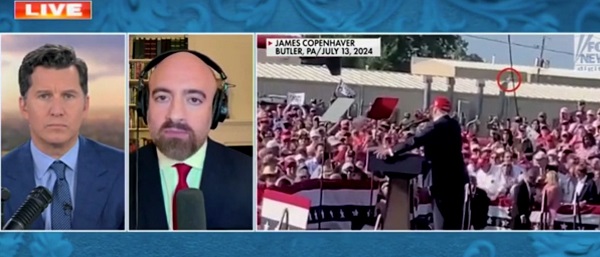
 Daily Caller20 hours ago
Daily Caller20 hours ago‘Strange Confluence Of Variables’: Mike Benz Wants Transparency Task Force To Investigate What Happened in Butler, PA
-
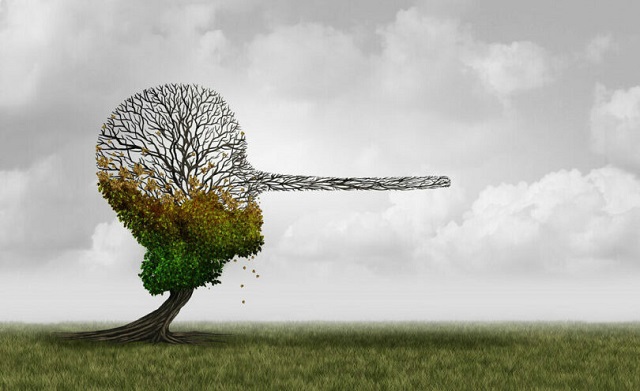
 Uncategorized2 days ago
Uncategorized2 days agoCNN’s Shock Climate Polling Data Reinforces Trump’s Energy Agenda
-
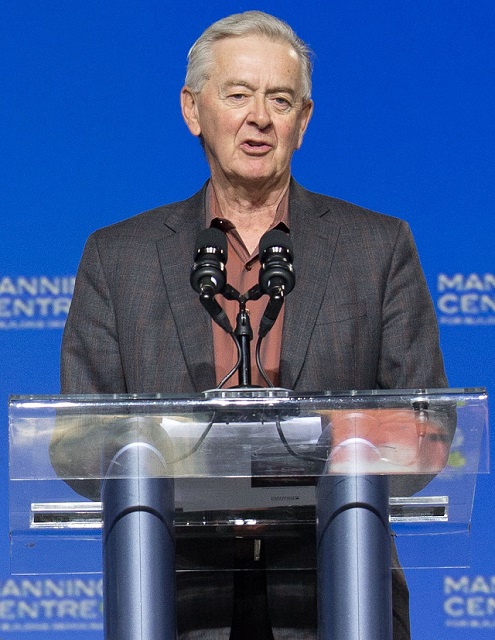
 Opinion1 day ago
Opinion1 day agoPreston Manning: Three Wise Men from the East, Again
-
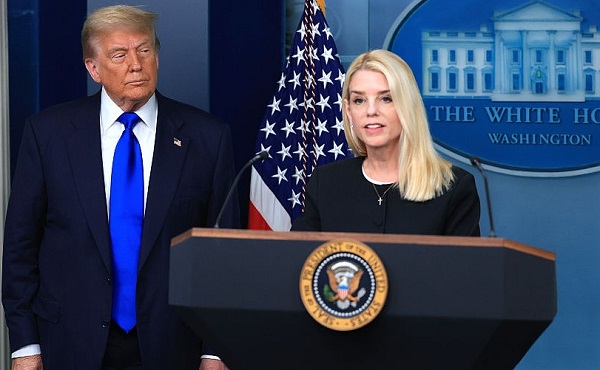
 COVID-191 day ago
COVID-191 day agoTrump DOJ dismisses charges against doctor who issued fake COVID passports

